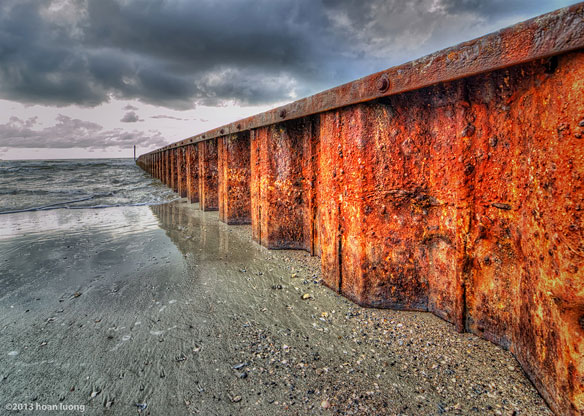
Rusted groin. Photo source: ©© Hoan Luong
“Terminal groins are shore-perpendicular structures built in attempt to slow erosion. When a groin works as intended, sand moving along the beach in the so-called downdrift direction is trapped on the updrift side of the groin, causing a sand deficit and increasing erosion rates on the downdrift side. This well-documented and unquestioned impact is widely cited in the engineering and geologic literature.” —Rob Young, Director of the Program for the Study of Developed Shorelines (PSDS) at Western Carolina University
Excerpts;
Terminal groins are hardened structures designed to control the movement of sand and (attempt to) slow erosion on beaches.
Until just a few years ago, these structures were not legal in North Carolina. But in 2011, the Legislature lifted the ban to allow four such structures – along with a host of caveats…
A Podcast and Article, HQR News
The Negative Impacts Of Groins, (02-12-2009)
The negative impact of groins on downdrift shorelines is well understood. When a groin works as intended, sand moving along the beach in the so-called downdrift direction is trapped on the updrift side of the groin, causing a sand deficit and increasing erosion rates on the downdrift side. This well-documented and unquestioned impact is widely cited in the engineering and geologic literature.
A Fiscal Analysis of Shifting Inlets and Terminal Groins in North Carolina, By Rob Young Director of the Program for the Study of Developed Shorelines at Western Carolina University (01-28-2011)
The debate about terminal groins, shore-perpendicular structures built at inlets in attempt to slow erosion, is worth keeping an eye on, whether you live in western North Carolina or in a coastal community, because it could cost you and our state a pretty penny…









